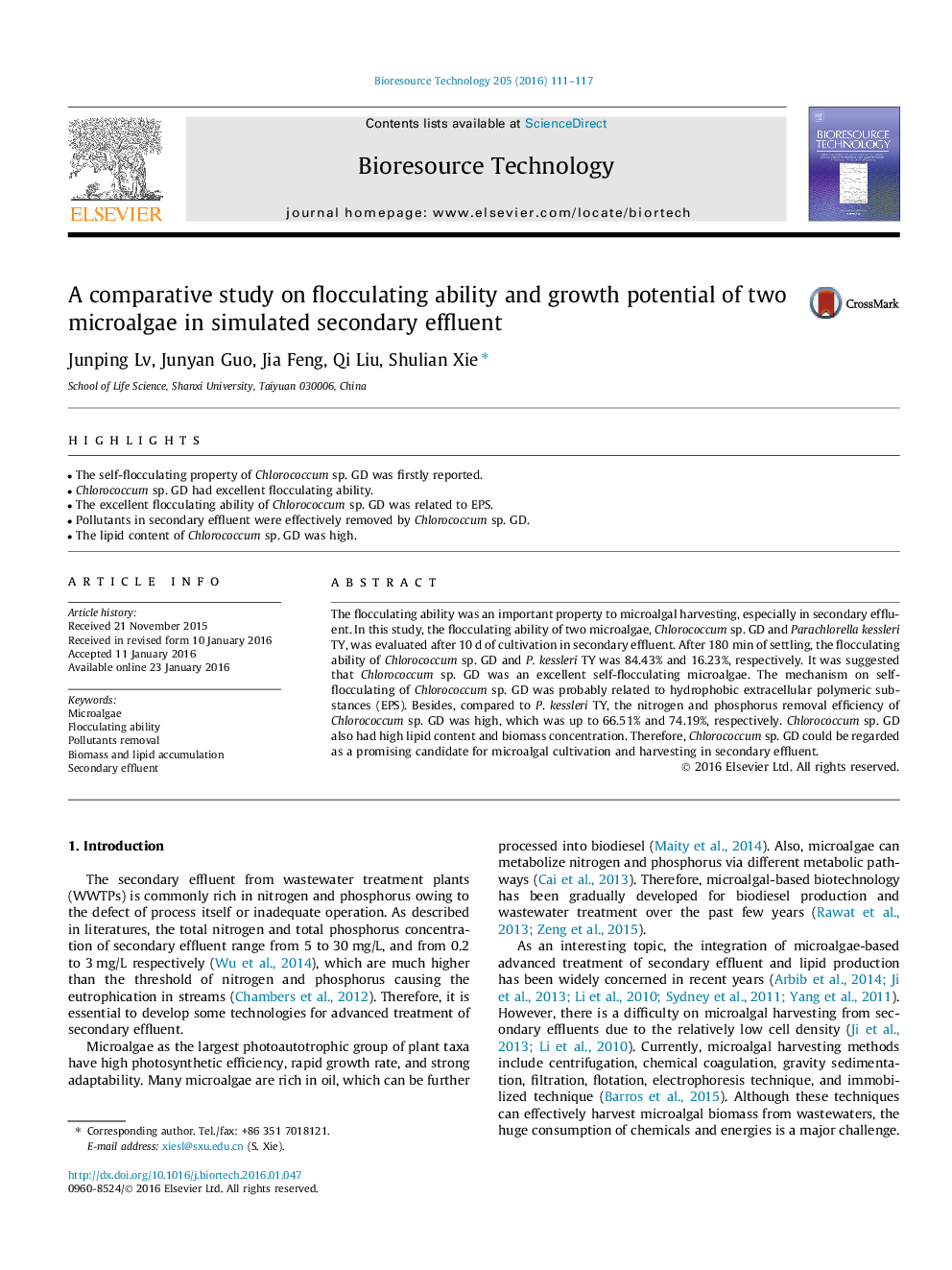| Article ID | Journal | Published Year | Pages | File Type |
|---|---|---|---|---|
| 679273 | Bioresource Technology | 2016 | 7 Pages |
Abstract
The flocculating ability was an important property to microalgal harvesting, especially in secondary effluent. In this study, the flocculating ability of two microalgae, Chlorococcum sp. GD and Parachlorella kessleri TY, was evaluated after 10Â d of cultivation in secondary effluent. After 180Â min of settling, the flocculating ability of Chlorococcum sp. GD and P. kessleri TY was 84.43% and 16.23%, respectively. It was suggested that Chlorococcum sp. GD was an excellent self-flocculating microalgae. The mechanism on self-flocculating of Chlorococcum sp. GD was probably related to hydrophobic extracellular polymeric substances (EPS). Besides, compared to P. kessleri TY, the nitrogen and phosphorus removal efficiency of Chlorococcum sp. GD was high, which was up to 66.51% and 74.19%, respectively. Chlorococcum sp. GD also had high lipid content and biomass concentration. Therefore, Chlorococcum sp. GD could be regarded as a promising candidate for microalgal cultivation and harvesting in secondary effluent.
Related Topics
Physical Sciences and Engineering
Chemical Engineering
Process Chemistry and Technology
Authors
Junping Lv, Junyan Guo, Jia Feng, Qi Liu, Shulian Xie,
